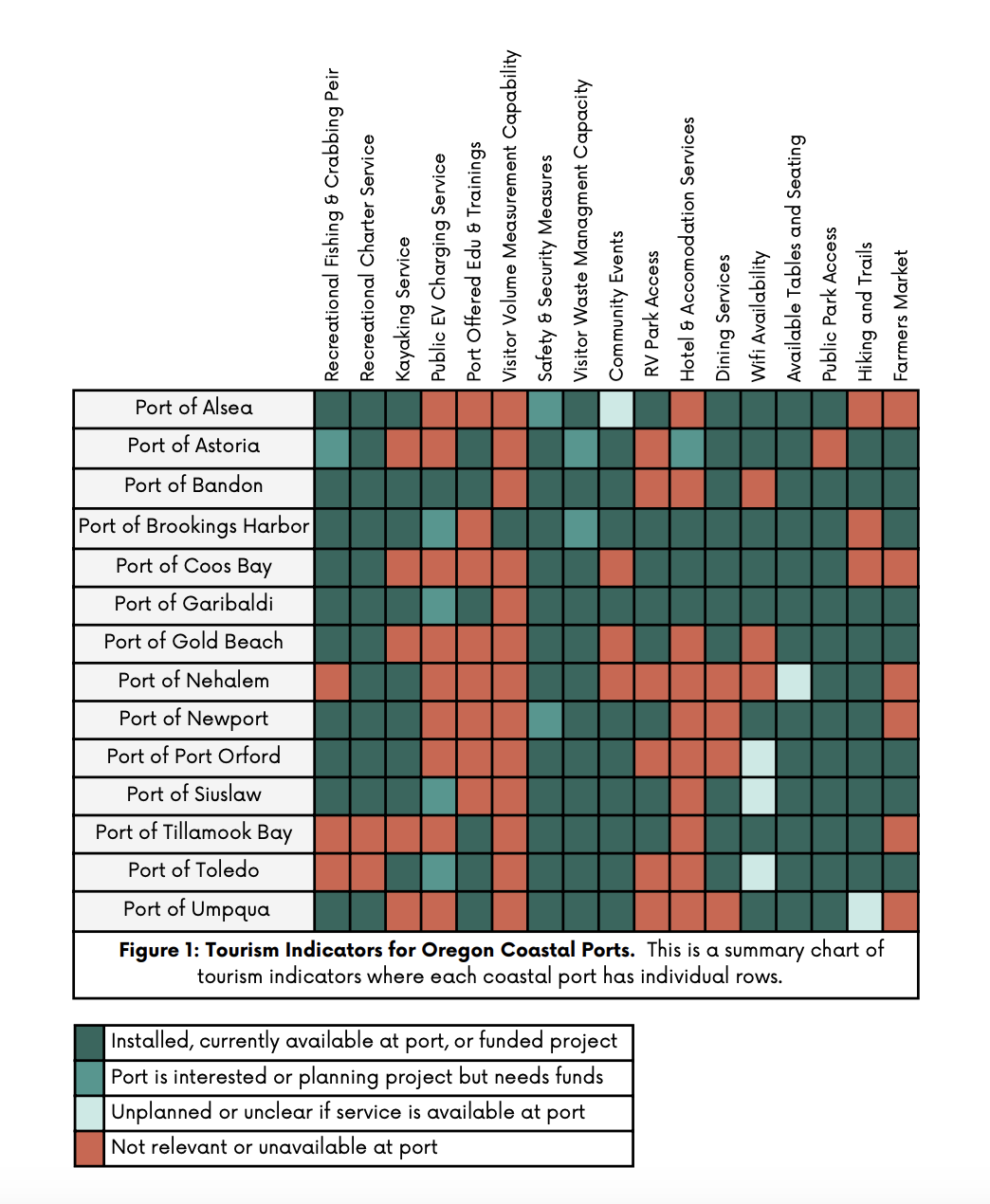On the Oregon Coast, ports are the heartbeat of our economy. The ocean is our greatest natural resource, supporting both the fishing and tourism industries. Ports serve as entry points to the water, centers of community activity, access points for locally caught seafood, and more.
The seafood and tourism industries utilize these shared spaces to nourish communities and stimulate the local economy, while providing launch points for recreational activities that attract families year after year. The 2024 Oregon Coastal Ports: A Biennial Snapshot report, funded by OCVA, illustrates the deep interconnection between the tourism industry and Oregon’s coastal ports, showcasing how these entities can collaborate to promote a more sustainable future for tourism and local food systems.
While ports have often been viewed primarily as pillars of the commercial fishing economy, they also offer recreational activities such as fishing, crabbing, charter services, kayaking, and community events. As visitor numbers increase each year, ports are uniquely positioned to drive sustainable tourism growth. For example, many of our partners are investing in electric vehicle (EV) infrastructure to mitigate the environmental impact of travel. Currently, the Port of Bandon is equipped with EV charging facilities available to the public, and four additional ports are planning to install similar infrastructure when funds become available. These upgrades will make the ports more accessible to visitors driving EVs and will highlight the ports as champions of sustainable travel.
This is a pivotal time in planning for the future of tourism and blue economy resilience. The ports are central to these efforts, and partners along the coast can benefit from a deeper understanding of the ports’ resources, strengths, and opportunities offered in this report.

Identifying Needs and Opportunities
The table above outlines a set of indicators showing which of the 14 ports currently have access to various amenities. Each of the 14 Oregon Coast ports has significant strengths (such as moorage capacity, new facilities, or access to infrastructure like seafood processing) and identified opportunities (such as needed infrastructure improvements, accessibility updates, or better marketing strategies to increase tourism visibility).
At this time, 13 out of the 14 ports lack the ability to measure visitor volume. Annual visitor measurement is a significant tool, as it can indicate the impact of tourism at port facilities. It can also indicate opportunities to better engage, and market to visitors. At this time two out of the 14 ports have a current marketing strategy, which offers a significant opportunity to better support ports in their engagement with stakeholders. As funding is allocated to infrastructure improvements, additional visitor traffic can be better understood and managed through these marketing efforts, aiding the ports’ position as hubs for the future of Oregon’s resilient blue economy and healthy tourism ecosystem.
Opportunities to Support Oregon Coast Ports
Tourism can be promoted through increased marketing efforts, training for effective marketing campaigns, measurement of visitor volume and trends, and promotion of port accessibility and attractions to boost local businesses and attract tourism.
As capacity and visitor volume at ports increases, a few ways to mitigate the impact of tourism on the coast include investment in electric vehicles, efforts to reduce carbon footprint through cleaner technologies and the adoption of renewable energy, adaptive strategies to address extreme weather events, and visitor education on conservation efforts. Partners can also support ports by learning about and investing in blue economy infrastructure, which works towards keeping seafood local and facilitating connections between local fishermen and the seafood supply chain. By investing in these opportunities, Oregon coastal ports can continue working towards an enhanced role in tourism, economic development, environmental stewardship, and climate change mitigation.
This report is an invaluable resource for our coastal partners. We encourage organizations to use this data to better understand the ports in their regions and the broader Oregon Coast economic landscape. By acting on this data, we can collectively improve the resiliency of the Oregon Coast by advocating for coastal ports, aligning their needs, and fostering collaboration among stakeholders.
The full report can be viewed here. For more information, contact industry@thepeoplescoast.com.
…
Oregon Coast Visitors Association
The Oregon Coast Visitors Association (OCVA) is the official Regional Destination Management Organization for the entire Oregon Coast as designated by the Oregon Tourism Commission (dba Travel Oregon). OCVA inspires travel and strengthens collaboration to create and steward a sustainable coastal economy.
OCVA has the honor of working with coastal communities to align partnerships, destination development projects, and destination marketing with the vision of creating “a coastal utopia for all.” This includes coastal stakeholders, new and returning visitors, and the natural resources that make these coveted experiences so magical.